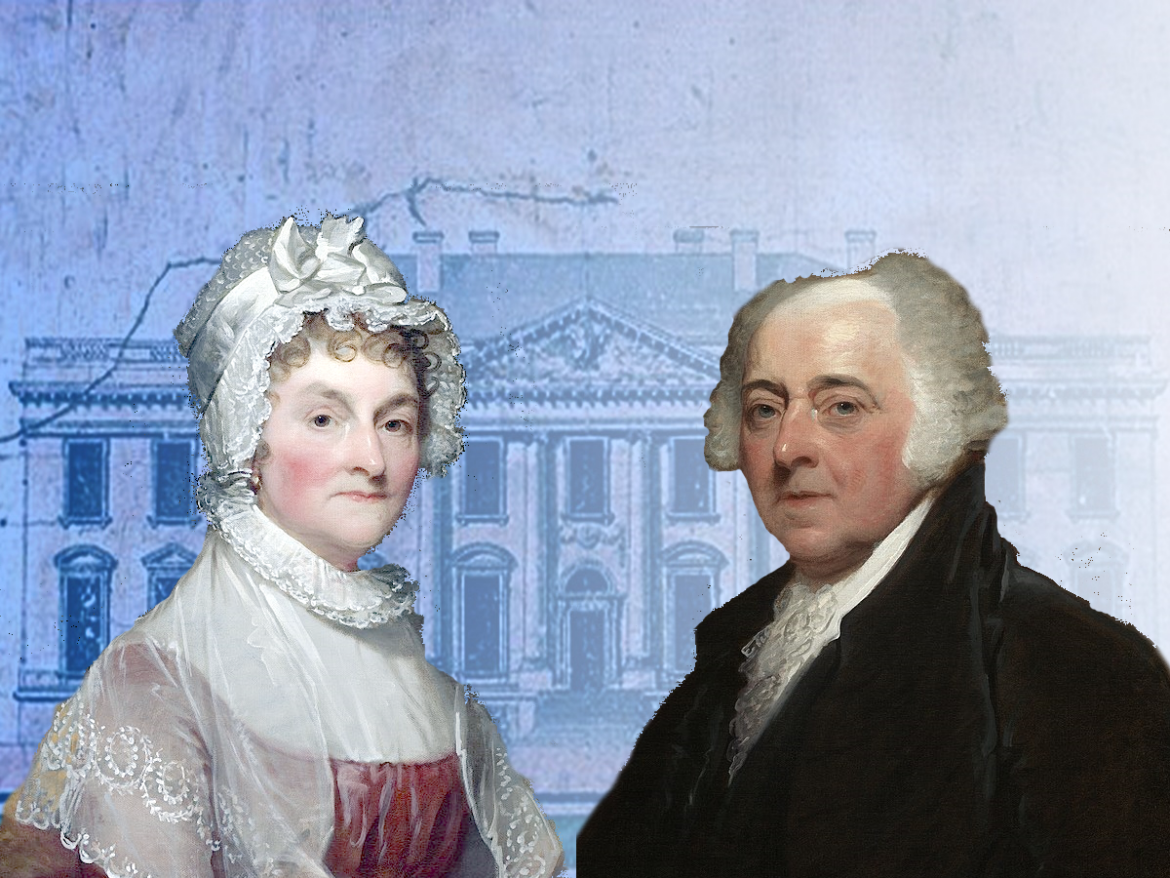Nothing cheered Abigail Adams so much as a wedding. During her lifetime of difficulty and sadness, she needed cheering. Her husband was often absent, a beloved son died young, a daughter lost a battle with breast cancer, another son became a dissolute alcoholic. Through it all, her family and servants came to view her as Abigail Adams, matchmaker.
She thought of her servants as family, kept their secrets and hosted their marriage ceremonies. She married off six pairs of them, five of them in her own home.
In 1801, that meant the White House.

1793 plans for the White House by James Hoban
Abigail Adams, Matchmaker
Abigail’s nephew, William Smith Shaw, knew how much she loved weddings. “I declare I wish you would have, Aunt, a wedding every night in the week, for I plainly see that it gives you better spirits and consequently better health, than all the medicine in the world,” he wrote to her in 1798.
“I am a great friend to Matrimony, and always like to promote it, where there is a prospect of happiness & comfort,” she replied.
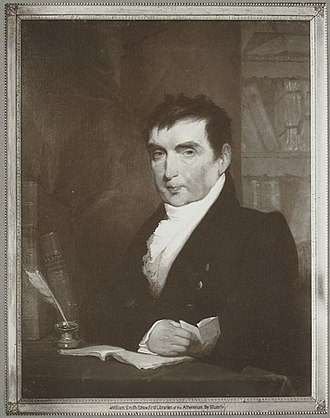
Portrait of William Smith Shaw by Gilbert Stuart.
She had just hosted the wedding of her servant Abigail Hunt and a local farmer, Ebenezer Harmon, at her farm in Quincy, Mass. “I regaled them with a Glass of wine, & some cake and Cheese,” she wrote. Then she went to bed as the wedding party went off dancing. “I retired to rest at about nine, and with the pleasurable reflection of having made Several honest families happy & pleasd I enjoyd a comfortable nights repose.”
John Adams heartily approved of Abigail’s matchmaking among the servants. “I hope you will marry Louisa & Betcy Howard and all the single ones, who are ripe,” he wrote to her from Philadelphia in 1798.
The First Wedding
In 1784, Abigail Adams made her first match. John Adams was then serving as minister to Great Britain and she was about to sail for London to join him. She hired John Briesler, a local man, to accompany her across the Atlantic. Before she left, she wrote to her husband about him . She called Briesler “a steady frugal fellow, with a mind much above the vulgar.” The Adamses came to depend on Briesler. “As good a servant as ever bore the name,” she later wrote. If it hadn’t been for him, she wrote years later, she never would have gone into public life. He was “virtuous, handy and attentive.”
Briesler was especially attentive to Abigail’s 23-year-old ladies’ maid, Esther Field. In 1788, just a few weeks before they were to return to America, Esther came to Abigail in much distress. She confessed Briesler had gotten her pregnant.
“[P]oor Brisler looks so humble and is so attentive, so faithfull & so trust worthy, that I am willing to do all I can for them,” Abigail wrote to her sister, Mary Cranch.
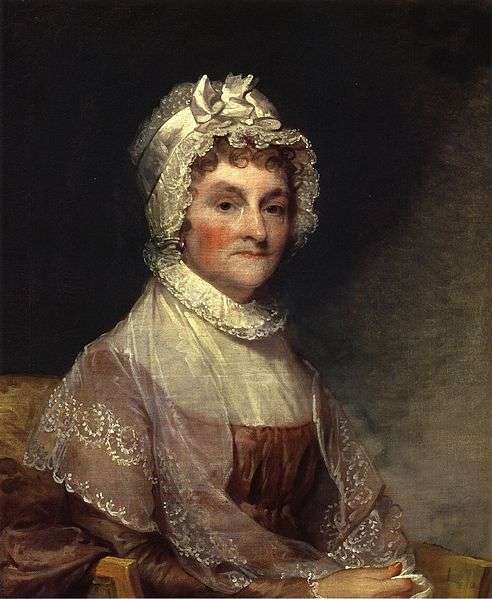
Abigail Adams by Gilbert Stuart
Abigail Adams, matchmaker, got them married a few days later in St. Marylebone church in London. Abigail worried about Esther delivering the baby aboard the ship returning home. She arranged for a nurse to come with them to help with the childbirth. The baby, a girl, was born aboard the ship. “We got through this business much better than I feared we should. I had for the first time in my life, to dress the little animal,” she wrote to her daughter.
Over the years, Esther had more babies. Abigail, however, found ways to keep her employed.
In 1797, she hosted the wedding of another servant, Polly Doble Howard, and Jonathan Baxter, Jr.
The White House
Abigail had managed the farm and family during her husband’s long absences. She engineered the moves to join him. She set up official houses in London and Paris on his diplomatic missions; to New York when he served as vice president of the United States and to Philadelphia as president. Then, three years into his presidency she had to set up another house. This time, she did it in the Wilderness City – Washington, D.C. – where the seat of government had moved.
It was November 1800. Abigail was 56 years old and not looking forward to the move. She had stayed at her Quincy farm fighting off raging fevers as her husband fought off his political enemies. He moved into the President’s House a few weeks earlier than she.
John Briesler was with him. Abigail had also sent William Shipley ahead of her to help. Another of John Adams’ servants was also probably in Washington: Richard Dexter, an “honest and faithful domestick” who handled horses.
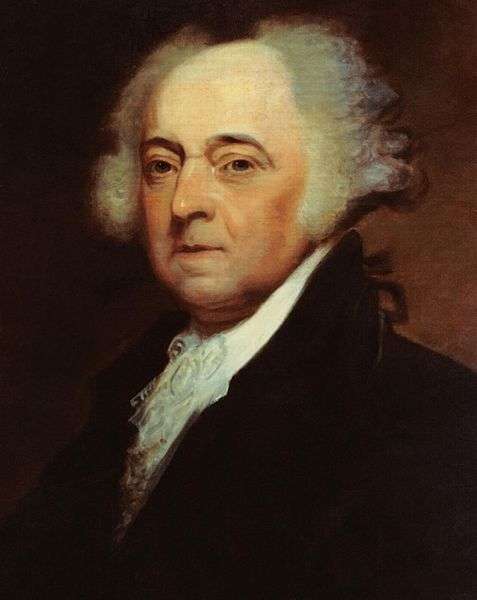
John Adams by Gilbert Stuart
White House Wedding
A week before Abigail was to leave for Washington, she sent two of her housemaids ahead. John Adams had called the White House “habitable,” but that may have been charitable. The staircases hadn’t been finished, the plaster hadn’t dried on the wall and none of the rooms had been furnished.
Rebecca Tyrell was one of the maids Abigail sent ahead. Rebecca had worked for Abigail since 1790 and nursed her through various illnesses. Abigail viewed her almost as a daughter. She called Rebecca “my most beloved domestic who was to me as a child in sickness and in Health.”
Betsy Howard went with Rebecca. She was Polly Doble Howard’s sister, and one of the domestics John Adams considered “ripe.” She would sleep on the same floor of the President’s House as Abigail and John Briesler. Their rooms, wrote Abigail, were as “handsome and well-furnishd as any of my Bed chambers at Quincy.”
The other servants slept along the ground floor corridor, in the basement.
So why did Betsy Howard get special treatment? “[F]or Many reasons I chose to have her under my own Eye,” wrote Abigail to her doctor, Cotton Tufts.
Abigail was probably worried that Betsy might find herself in the same position as Esther Field had 16 years earlier. Or maybe she had.
In January 1801, Betsy Howard married William Shipley in the President’s House.
Abigail Adams, Matchmaker Twice More
Abigail Adams spent only four months in the cold, unfinished White House, where she had famously hung her washing to dry in the East Room.
Her grandson, Charles Francis Adams, would observe, “there is something in the climate and habits of this place very hostile to the happiness of New Englanders.” She and John had, in fact, been miserable in the White House.
Two weeks after Abigail Adams arrived in Washington, their son Charles died, a homeless alcoholic, in New York City. Two weeks after that they would learn John had lost the presidential election. During that time they had only 13 servants to do the work of 30 – furnishing the big house, hosting official entertainments and keeping the fires going to dry the plaster.
Abigail left Washington happily in February 1801. “My residence in this city has not served to endear the world to me. I am sick, sick and sick of Publick life,” she wrote as she left.
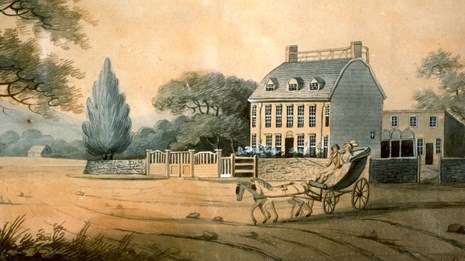
Peacefield, the Adams home in Quincy
She wasn’t sick of matchmaking. In 1802, Elizabeth Epps and Tilly Whitcomb married at the Adams’ farm in Quincy.
Rebecca Tyrell stayed with Abigail another three years after they left Washington. John Adams had brought Richard Dexter back with him to Quincy. In 1804, Rebecca Tyrell married him at the Adams farm. Abigail would remember Rebecca in her will, bequeathing her $30 and a gown.
After the ceremony, Abigail Adams, matchmaker, bragged of her love matches to her friend, Hannah Phillips Cushing.
“At the Wedding,” Abigail continued, “amongst other Guests were six couple who had lived with me during her residence with me all of whom had been married from me in that period & all but one married in my family. This I believe is rather a singular instance.”
